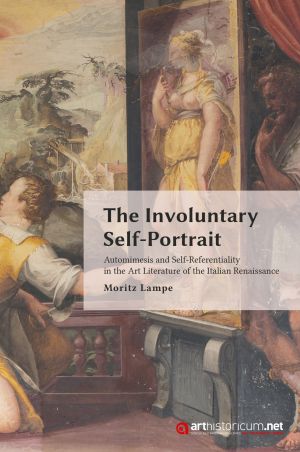
How to Cite
License

This work is licensed under a Creative Commons Attribution-NonCommercial-NoDerivatives 4.0 International License.
Identifiers
Published
The Involuntary Self-Portrait
Automimesis and Self-Referentiality in the Art Literature of the Italian Renaissance
Automimesis or the idea that “every painter paints himself” was a notion that was frequently voiced in art literature of the Italian Renaissance. It was initially thought to be an artistic flaw which threatened the faithful imitation of nature. The corporeal or spiritual similarity between an artist and his work, however, was soon to become a facet that was regarded as positive. Considering biographies of artists, art treatises, and artworks, this book explores the reasons for this paradigmatic shift and shows how ideas from the early modern period continue to shape our modern understanding of the autonomy of the arts.
Media coverage
Andreas Beyer: [Rezension zu:] Moritz Lampe: The Involuntary Self-Portrait. Automimesis and Self-Referentiality in the Art Literature of the Italian Renaissance, Heidelberg 2022. In: ArtHist.net, 21.10.2024. Letzter Zugriff 22.10.2024. <https://arthist.net/reviews/42979>.






